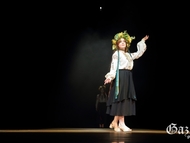
LINC is a program to foster leading universities. LINC was made by the Ministry of Education and Science Technology to improve the relationship between companies and universities. In addition, Capstone Design was made by the Industry-Academic Cooperation Foundation and is offered as a regular class in nine colleges: Business Administration, Social Sciences, Natural Sciences, Engineering, Architectural Studies, Medicine, Pharmacy, Fine Arts, and Fashion. Capstone Design is also a LINC program. In this edition, the Gazette will introduce LINC and Capstone Design.
LINC
LINC is an abbreviation of Leaders in Industry-University Cooperation. The program’s purpose is to change universities into industrial-cooperative universities and support industry-university cooperative activities. In addition, it tries to help more local university students get a job and make new items or projects through the new workers from local universities. Keimyung University was given a budget of around 14.5 billion won by the Ministry of Education and Science Technology for five years from April 1, 2012, to February 28, 2017. Two years was used to find some problems that LINC had, and the next three years will be used to recruit KMU students, make items and projects, and help more students get a job.
LINC consists of 4 parts: training students, entrepreneurship training, employment support, and industry-university cooperative activities. In training students, the Industry-Academic Cooperation Foundation gives students an opportunity to join a company for a short time, and students take classes in setting up a business. Students can join a short field placement program for four or eight weeks and a semester internship program which is carried out over sixteen weeks. In addition, the Industry-Academic Cooperation Foundation operates an interdisciplinary major program. There are five subjects: smart machine system engineering, smart mobile engineering, well-being bio, knowledge-based service start-ups, and culture and contents. Many interdisciplinary major’s classes consist of practical training classes with new equipment. For example, the students in smart mobile engineering learn about how to make cell phone applications.
In entrepreneurship training, the Industry-Academic Cooperation Foundation promotes student interest in establishing a business, and makes groups and camps for establishing a business. Furthermore, it gives students an opportunity to enhance their entrepreneurial spirit and creativity. For example, it gives financial support to students to make creative items and invites mentors who can give advice to students on running a business. On November 11, 2013, Kang Ki-tae, who did a cross-country trip with a tractor for 180 days, and Oh Jong-cheol, who is the CEO of the production agency Eight Springs, gave a lecture and advice and know-how to students.
In employment support, the Foundation gives students an opportunity to take a class in employment. There are three classes: career choice and preparation for getting a job, strategies for getting a job and entry into society, and career development for female students. These are regular classes held every semester. Furthermore, getting a job consultation, in which an expert proofreads a resume and cover letter, and a job matching program in which students have an interview when a company wants to hire new workers are in this part’s programs.
Through industry-university cooperative activities, the university can be a useful resource to help companies through three advantages that the university has: educational infrastructure, professional faculty, and R&D (research and development) equipment. Companies can ask the university to give a lecture to its workers or use the R&D equipment because the university can provide all the equipment that a company needs, such as 3D scanners. Furthermore, the university provides management consultation. An industry-university cooperative innovation in techniques forum, hosted by the Industry-Academic Cooperation Foundation and supported by six associations such as the National Research Foundation of Korea and Daegu-Gyeongbuk Medical Innovation Foundation, was held in the Saint Western Hotel in Sungseo on October 18, 2013. In this forum, many industries and organizations shared ideas with each other.

Capstone Design
Capstone Design is a program which is in the training part of the LINC program. In Capstone Design, students make a team and work together to design a project or make an item which a company needs or to solve a problem that a company has, based on their major. Last semester, Capstone Design was a class in only some colleges: Business Administration, Social Science, and Engineering. However, this semester, Capstone Design is a regular class in 30 majors at nine colleges (Business Administration, Social Sciences, Natural Sciences, Engineering, Architectural Studies, Medicine, Pharmacy, Fine Arts, and Fashion). Capstone Design class is only for juniors and seniors. It is run every semester including summer and winter sessions.
There are three kinds of project: designated subject projects, industry-linked projects, and free subject projects. Students who choose a designated subject project have to work with team members on a project that the university designates or a contest which is hosted by a company or organization. Students who choose an industry-linked project have a mentor in a company and work on a project that the company or customer requires. Students who choose a free subject project can work on whatever subject they want.
Capstone Design gives diverse opportunities to students. First, it provides financial support. The Industry-Academic Cooperation Foundation gives a basic 1,000,000 won per team, and some teams in the colleges of Engineering, Fine Arts, and Fashion receive 1,200,000 won. Furthermore, the mentor of an industry-linked project team receives 200,000 won per month from October to December. Therefore, if the students submit an application for business travel, purchase requisition, and a record that proves all the members had a meeting and shared ideas, the team members can visit the company without any expense and buy the materials which are needed to make an item.
Second, a team whose project is selected as an excellent project in the presentation appraisal in November gets an opportunity to join the national Capstone Design contest. Through this process, students can improve their ability to plan a project.

The participation rate of LINC is still a little poor. The number of students who can join Capstone Design is around 4,500, but only 800 students joined it this semester. However, LINC gives students diverse opportunities to utilize their major and get a job, and companies can employ workers that it wants to hire. Therefore, the more students who join LINC, the more diverse opportunities students will get and suitable workers companies will get.








